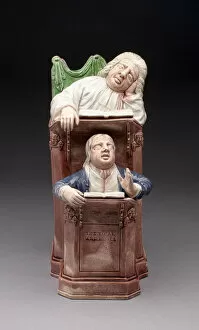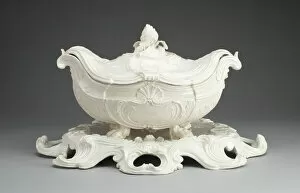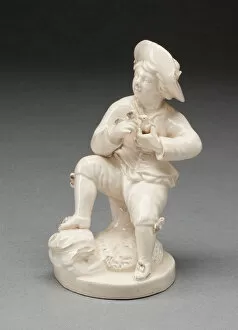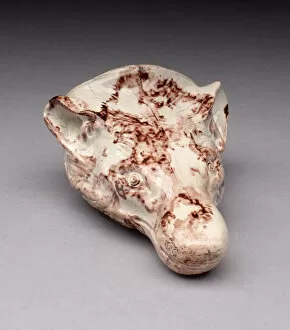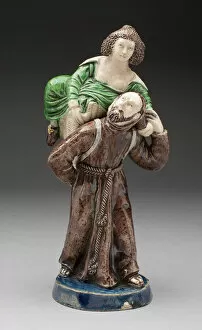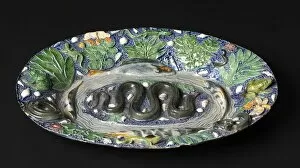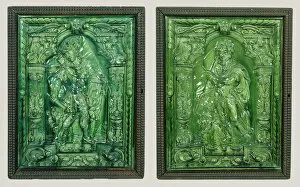Lead Glazed Earthenware Collection
"Exploring the Beauty of Lead Glazed Earthenware: A Journey through Time" Step into the world of lead glazed earthenware
All Professionally Made to Order for Quick Shipping
"Exploring the Beauty of Lead Glazed Earthenware: A Journey through Time" Step into the world of lead glazed earthenware, a captivating art form that has stood the test of time. From exquisite jugs to intricate figures, each piece tells a unique story and showcases the remarkable craftsmanship of its creator. One such masterpiece is Rodney's Sailor Toby Jug, crafted by Ralph Wood the Younger in Staffordshire during 1780/90. This charming jug depicts a sailor with meticulous attention to detail, capturing the essence of maritime life in stunning fashion. In another creation by Ralph Wood the Younger called "The Vicar and Moses, " we witness a delightful scene from England during 1780/90. The figurine portrays an amusing encounter between a vicar and his mischievous dog Moses, evoking laughter and admiration for its lifelike portrayal. Traveling further back in time to around 1790, we encounter an enchanting figure of Geoffrey Chaucer. Crafted in Staffordshire, this piece pays homage to one of literature's greatest minds with its intricate details and expressive features. Venturing beyond English borders, we stumble upon a Tureen and Stand from Paris dating back to approximately 1750. Created by the Pont-aux-Choux Manufactory, this elegant ensemble exudes sophistication with its delicate design and impeccable glaze work. Continuing our journey across Europe, we discover two captivating pieces from Italy circa 1775 - Boy with Two Birds and Girl with Bird Nest. Although their creators remain unknown, these sculptures showcase Italian artistry at its finest as they capture moments frozen in time with astonishing realism. Returning to Staffordshire around 1780 is Rhyton Cup in the Form of Hair – an extraordinary vessel shaped like flowing locks that exemplifies both creativity and technical skill. Similarly impressive is Rhyton Cup in the form of Fox from c.


